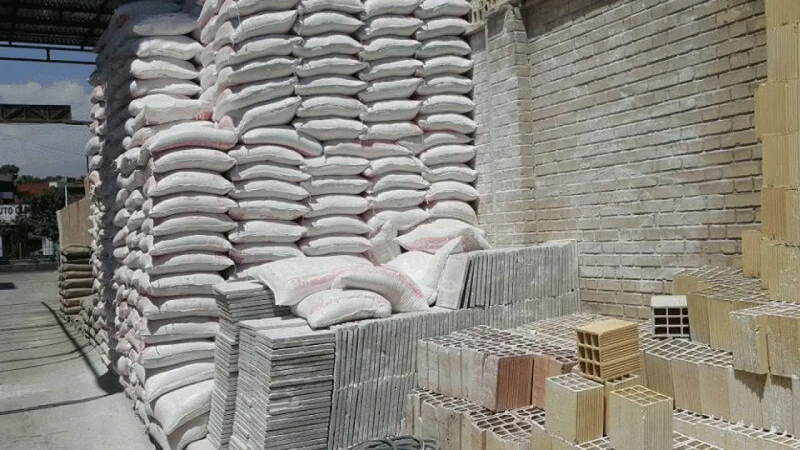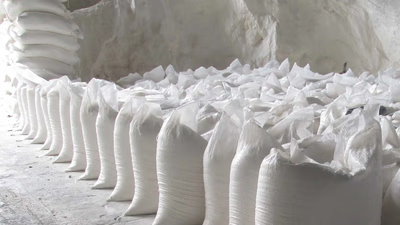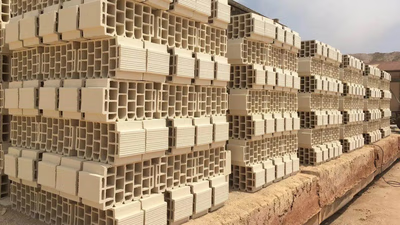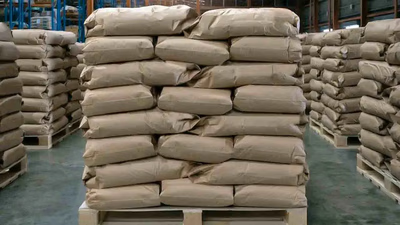
Building materials in the Middle East: cement, steel, and more.
The Middle East has experienced a construction boom in recent years, driven by urbanization, population growth, and ambitious development plans. Major cities like Dubai, Abu Dhabi, Doha, and Riyadh have witnessed extensive construction projects such as skyscrapers, mega-malls, hotels, residential complexes, and infrastructure projects like airports, roads, and railways. Governments in the region have been actively investing in large-scale infrastructure projects to diversify their economies and reduce their dependence on oil revenue. These investments have created a strong demand for building materials.
The Middle East has hosted or is planning to host several mega-events like the Dubai Expo 2020 (now rescheduled to 2021), FIFA World Cup 2022 in Qatar, and various regional sporting events. These events have stimulated the construction sector and increased the demand for building materials. There is a growing emphasis on sustainable construction practices in the region. Green building initiatives, energy-efficient designs, and the use of eco-friendly materials are gaining popularity. This trend has led to increased demand for sustainable building materials such as recycled materials, low-emission products, and energy-saving technologies.
The construction industry is one of the most prosperous industries and businesses in the world. Working in the construction-related industries can also bring good profits. Among the items that are directly related to construction are construction materials and masonry. The Middle East is currently one of the seven largest cement producing countries in the world. Middle East cement has been exported to India, Russia, Iraq, Qatar, Bangladesh, China, Kenya, Sri Lanka, Turkmenistan, Kazakhstan, Oman and others.
Despite all the obstacles created in this country, Iraq is still the first destination for clinker and cement exports in the Middle East. Kuwait and Afghanistan are next. The Middle East exports 12 million tons of clinker annually, and Iraq is the largest buyer of clinker in the Middle East. The amount of 30% of the country's clinker exports are now done through the Arvand Free Zone. Arvand Free Zone will soon become the first exporter of clinker in the country.
The West Asian building materials market consists of both locally produced materials and imports. Local production includes products like cement, steel, aluminum, and ceramics, which are produced in the region. However, due to the scale of construction activities, a significant amount of building materials is imported from other countries. The region is known for its mega projects, such as the construction of iconic skyscrapers, artificial islands, and large-scale infrastructure projects. These projects require vast quantities of building materials and offer lucrative opportunities for suppliers and manufacturers.
While there are similarities in the building materials market across West Asia, there are also regional variations. Each country has its own regulations, construction practices, and material preferences, influenced by factors such as climate, cultural preferences, and economic conditions. The building materials market in West Asia is highly competitive, with both local and international players vying for market share. Local companies often dominate the supply of key materials, while international manufacturers and suppliers cater to specialized products and technologies.
The region has shown a growing interest in adopting advanced construction technologies and materials. Innovations such as 3D printing, prefabrication, modular construction, and smart building systems are being explored and implemented to improve efficiency and reduce construction time. Besides commercial and residential construction, significant investments are being made in infrastructure development, including transportation networks, ports, power plants, and water management systems. These projects require a wide range of building materials.
-

Gypsum plaster is a versatile building material widely used for interior finishes, providing a smooth and durable surface for walls and ceilings. It is a key component of drywall systems, offering benefits such as fire resistance and sound insulation. Gypsum plaster is also essential in repair and restoration work, allowing for the patching and leveling of damaged surfaces. Various types of gypsum plaster, including whitewash, micronized, ivory, Gipton, and Siwa plaster, cater to different construction needs, from decorative elements to moisture resistance. Gypsum plaster can be molded into intricate shapes for architectural detailing and is commonly applied in plaster skimming to achieve a uniform finish. Additionally, it is utilized in the construction of false ceilings, concealing services while enhancing aesthetics. Gypsum plaster"s acoustic properties make it suitable for sound treatment in spaces like theaters and studios. Its inherent fire resistance contributes to building safety, enabling the creation of fire-rated structures. The adaptability of gypsum plaster, combined with its various formulations, makes it a crucial material in the Middle East"s construction industry, supporting both residential and commercial projects.
-

Construction sand is essential for concrete and mortar, forming a key part of the aggregate mix used in various construction projects. The rapid growth of the construction sector in West Asia has led to increased demand for sand, necessary for residential, commercial, and infrastructure developments. Countries like the UAE, Qatar, and Saudi Arabia have implemented strict quality standards for construction materials, including sand, to ensure durability and strength. However, local availability varies; some nations depend on imports due to limited natural sources. For instance, Dubai imports sand from Australia for land reclamation projects. Coastal countries like Bahrain and Qatar can source sand locally, but this raises environmental concerns such as coastal erosion. The extraction of sand from riverbeds and coastal areas can disrupt ecosystems and lead to stricter regulations. To address environmental impacts, alternative materials like recycled concrete aggregates and manufactured sand are being explored.
The prices of construction sand fluctuate based on availability, demand, and regulations, affecting overall construction costs. Sustainable sand management practices are being adopted in some West Asian countries to promote responsible sourcing and alternative materials, ensuring the construction industry can meet its needs without compromising the environment.
-

Concrete, steel, bricks, wood, and aggregates are essential materials in civil construction, each offering unique properties. Concrete, a mixture of cement, aggregates, and water, is favored for its strength and versatility. Steel is crucial for structural integrity, providing high strength and corrosion resistance. Bricks, made from clay or concrete, contribute to thermal insulation and aesthetics. Wood is valued for its renewability and insulation properties, while aggregates serve as fillers in various construction applications. Asphalt is used for paving, ensuring durability and smooth surfaces. Cement acts as a binding agent in concrete and mortar, while glass enhances natural light and aesthetics in buildings. Understanding these materials is vital for construction professionals to create durable structures.
The industry also sees innovations with new materials like bitumen membranes and plastic composites, which improve moisture resistance and insulation. Familiarity with both traditional and modern materials is essential for effective construction planning and execution.
-

The Middle East"s construction sector is thriving, fueled by urbanization, population growth, and ambitious development plans. Major cities like Dubai, Abu Dhabi, and Doha are undergoing extensive construction, including skyscrapers and infrastructure projects, driven by government investments aimed at economic diversification. The region"s hosting of mega-events, such as the Dubai Expo 2020 and FIFA World Cup 2022, has further increased demand for building materials. A notable trend is the shift towards sustainable construction practices, with a rising interest in eco-friendly materials and energy-efficient designs. The Middle East is a significant player in the global cement market, exporting millions of tons of clinker, with Iraq being the largest buyer. The building materials market in West Asia includes both locally produced and imported materials, with local production focusing on cement, steel, and ceramics. The competitive landscape features both local companies and international suppliers, catering to diverse material preferences influenced by regional regulations and economic conditions. Advanced construction technologies, such as 3D printing and modular construction, are being adopted to enhance efficiency. Investments in infrastructure development are also substantial, requiring a wide array of building materials, thus presenting lucrative opportunities for suppliers and manufacturers.
-

Cement is a crucial material in construction, with various types serving specific purposes. Ordinary Portland Cement (OPC) is the most widely used, suitable for general construction. Blended cements, like Pozzolanic Portland Cement (PPC), enhance durability and are ideal for aggressive environments. Rapid Hardening Cement is designed for projects requiring quick strength gain, while Sulphate Resistant Cement protects structures from sulfate attacks. High Alumina Cement offers heat resistance for high-temperature applications. Other types include Colored Cement for aesthetic finishes, Refractory Cement for extreme conditions, and Waterproofing Cement for moisture protection. Each type of cement is formulated to meet specific construction needs, ensuring structural integrity and longevity. The choice of cement impacts the overall performance of construction projects, making it essential for builders to understand the properties and applications of each type.
-

Clay is essential in construction, primarily for producing bricks and blocks. It is mixed with water, shaped, and fired to create durable materials. Clay bricks are favored for their thermal insulation and aesthetic appeal, making them ideal for load-bearing walls and facades. Traditional construction techniques like adobe and rammed earth utilize clay mixed with sand and organic fibers, resulting in sustainable structures with excellent thermal mass. Clay also serves as a plastering material, offering breathability and insulation for various surfaces. Additionally, clay roofing tiles are popular for their durability and weather resistance, particularly in hot climates. The soil"s composition, including clay"s fine grains, affects its construction properties. Clay"s ability to stabilize temperature in buildings enhances energy efficiency.
It is also used in drainage systems due to its corrosion resistance. Beyond construction, clay is utilized in landscaping and as a natural liner for landfills. Its thermal insulation properties are harnessed in lightweight clay blocks and aggregates. In geotechnical engineering, clay stabilizes soil and prevents erosion. Eco-friendly clay-based paints are emerging as alternatives to conventional options, promoting healthier indoor air quality. The versatility of clay in construction and landscaping highlights its importance in the Middle East"s trade landscape, particularly within B2B marketplaces focused on regional product listings and verified exporters.






